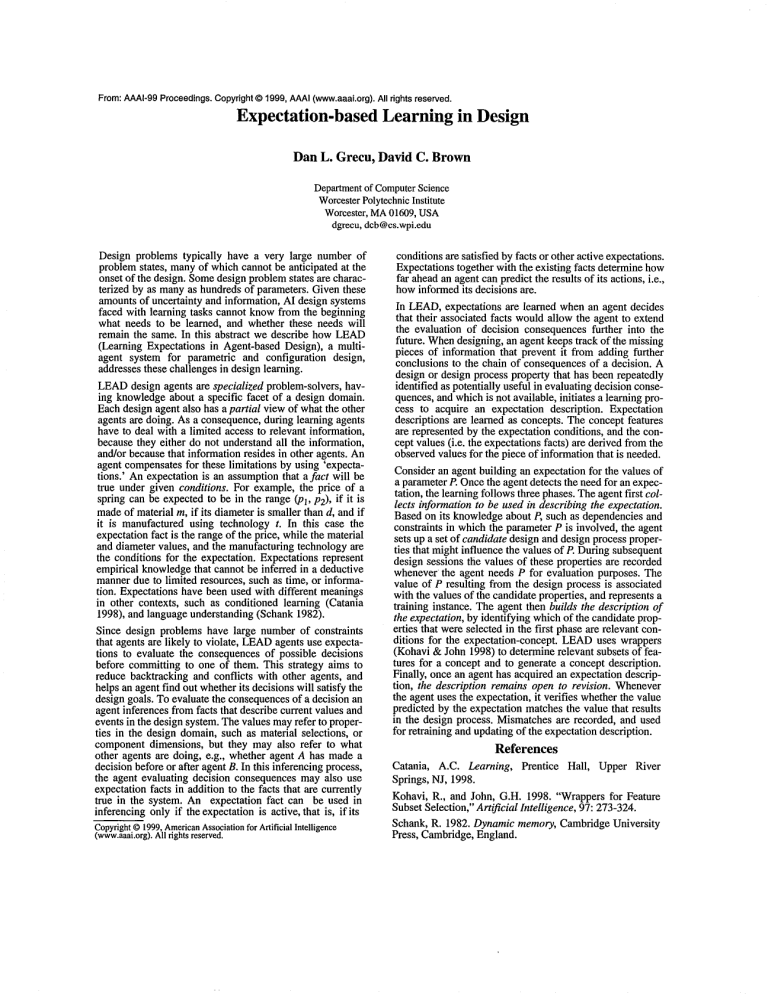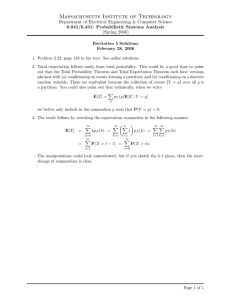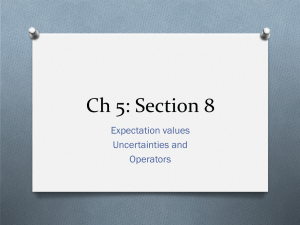Expectation-based Learning in Design
advertisement

From:AAAI-99 Proceedings. Copyright © 1999,AAAI (www.aaai.org). All rights reserved. Expectation-based Learning in Design Dan L. Grecu, David C. Brown Departmentof ComputerScience WorcesterPolytechnicInstitute Worcester, MA01609, USA dgrecu, dcb@cs.wpi.edu Design problems typically have a very large number of problemstates, manyof which cannot be anticipated at the onset of the design. Somedesign problemstates are characterized by as manyas hundreds of parameters. Given these amountsof uncertainty and information, AI design systems faced with learning tasks cannot knowfrom the beginning what needs to be learned, and whether these needs will remain the same. In this abstract we describe how LEAD (Learning Expectations in Agent-based Design), a multiagent system for parametric and configuration design, addresses these challenges in design learning. LEAD design agents are specialized problem-solvers, having knowledgeabout a specific facet of a design domain. Eachdesign agent also has a partial view of what the other agents are doing. As a consequence,during learning agents have to deal with a limited access to relevant information, because they either do not understand all the information, and/or because that information resides in other agents. An agent compensatesfor these limitations by using ’expectations.’ Anexpectation is an assumptionthat a fact will be true under given conditions. For example, the price of a spring can be expectedto be in the range (Pl, P2), if it madeof material m, if its diameter is smaller than d, and if it is manufactured using technology t. In this case the expectation fact is the rangeof the price, while the material and diameter values, and the manufacturing technology are the conditions for the expectation. Expectations represent empirical knowledgethat cannot be inferred in a deductive mannerdue to limited resources, such as time, or information. Expectations have been used with different meanings in other contexts, such as conditioned learning (Catania 1998), and language understanding (Schank 1982). Since design problems have large number of constraints that agents are likely to violate, LEAD agents use expectations to evaluate the consequences of possible decisions before committing to one of them. This strategy aims to reduce backtracking and conflicts with other agents, and helps an agent find out whetherits decisions will satisfy the design goals. To evaluate the consequencesof a decision an agent inferences from facts that describe current values and events in the design system. The values mayrefer to properties in the design domain,such as material selections, or componentdimensions, but they may also refer to what other agents are doing, e.g., whether agent A has madea decision before or after agent B. In this inferencing process, the agent evaluating decision consequences may also use expectation facts in addition to the facts that are currently true in the system. An expectation fact can be used in inferencing only if the expectationis active, that is, if its Copyright ©1999,American Association for ArtificialIntelligence (www.aaai.org). All rightsreserved. conditionsare satisfied by facts or other active expectations. Expectations together with the existing facts determinehow far aheadan agent can predict the results of its actions, i.e., howinformedits decisions are. In LEAD,expectations are learned when an agent decides that their associated facts wouldallow the agent to extend the evaluation of decision consequences further into the future. Whendesigning, an agent keeps track of the missing pieces of information that prevent it from adding further conclusions to the chain of consequences of a decision. A design or design process property that has been repeatedly identified as potentially useful in evaluating decision consequences,and whichis not available, initiates a learning process to acquire an expectation description. Expectation descriptions are learned as concepts. The concept features are represented by the expectation conditions, and the concept values (i.e. the expectations facts) are derived from the observed values for the piece of information that is needed. Consider an agent building an expectation for the values of a parameterP. Oncethe agent detects the need for an expectation, the learning follows three phases. Theagent first collects information to be used in describing the expectation. Based on its knowledgeabout P, such as dependencies and constraints in whichthe parameter P is involved, the agent sets up a set of candidate design and design process properties that might influence the values of P. During subsequent design sessions the values of these properties are recorded wheneverthe agent needs P for evaluation purposes. The value of P resulting from the design process is associated with the values of the candidate properties, and represents a training instance. The agent then builds the description of the expectation, by identifying whichof the candidate properties that were selected in the first phase are relevant conditions for the expectation-concept. LEADuses wrappers (Kohavi & John 1998) to determine relevant subsets of features for a concept and to generate a concept description. Finally, once an agent has acquired an expectation description, the description remains open to revision. Whenever the agent uses the expectation, it verifies whetherthe value .predicted by the expectation matchesthe value that results m the design process. Mismatches are recorded, and used for retraining and updating of the expectation description. References Catania, A.C. Learning, Prentice Hall, Upper River Springs, NJ, 1998. Kohavi, R., and John, G.H. 1998. "Wrappers for Feature Subset Selection," Artificial Intelligence, 97: 273-324. Schank, R. 1982. Dynamicmemory, Cambridge University Press, Cambridge, England.




